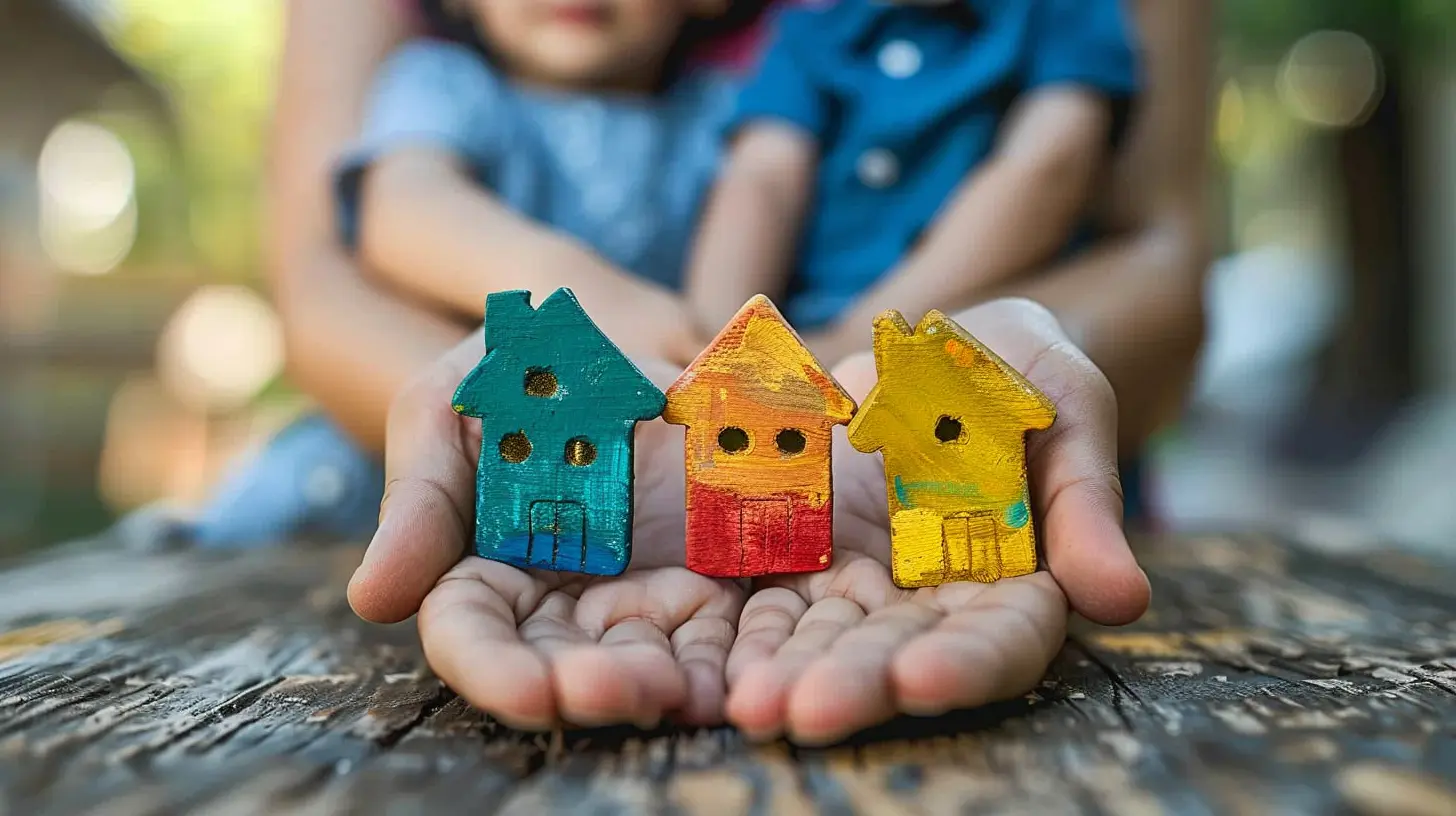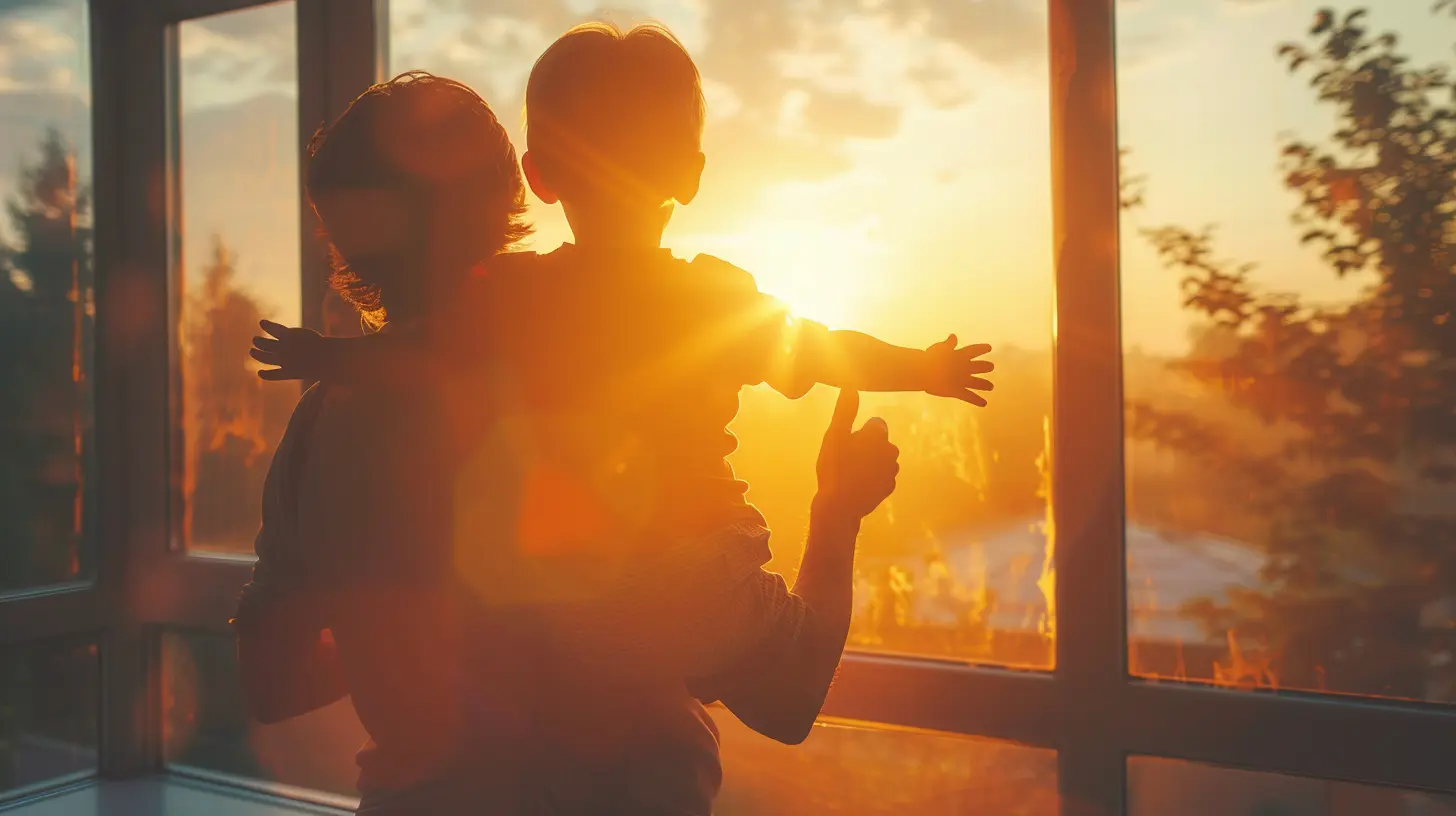Creating a Home Environment That Builds Confidence
26 August 2025
Confidence isn’t something we’re born with—it’s built over time. And guess what? The foundation of a confident child starts right at home. The way we speak, the way we encourage, and the atmosphere we create all play a significant role in shaping our children's self-esteem.
Imagine your home as a greenhouse. Just as plants need sunlight, water, and the right soil to thrive, kids need the right environment to develop confidence. So, how do you create that space where your child feels secure, empowered, and ready to take on the world? Let's dive in! 
1. Foster a Positive and Supportive Atmosphere
A confident child thrives in a space where they feel loved, valued, and supported. Your words, actions, and even your tone of voice can make or break their self-esteem.Use Words That Uplift
Words are powerful. They can either build up or tear down. Simple phrases like:✅ "I believe in you!"
✅ "You’re capable of handling this."
✅ "Mistakes are part of learning."
These phrases reinforce positivity and let your child know they are capable and loved unconditionally.
Celebrate Effort Over Perfection
Confidence isn’t about getting everything right—it’s about knowing that mistakes are just stepping stones. Instead of praising only achievements, celebrate the effort:❌ Instead of: "You’re so smart!"
✅ Say: "I love how hard you worked on this!"
This small shift encourages growth and resilience, which are key ingredients in self-confidence. 
2. Encourage Independence and Decision-Making
A confident child is one who believes in their ability to handle things on their own. That belief grows when they’re given the chance to make decisions and take responsibility.Give Choices (Even Small Ones Matter!)
When kids have a say in things (even small ones), they feel a sense of control over their world.🔹 Let them choose their clothes.
🔹 Let them decide between two snacks.
🔹 Give them options on what game to play.
These small decisions teach them that their opinions matter and that they are capable of making choices.
Let Them Solve Their Own Problems
It’s tempting to step in and fix everything, but that doesn’t help build confidence. Instead of immediately offering solutions, ask:👉 "What do you think you should do?"
👉 "How do you want to handle this?"
This teaches them to trust their judgment and develop problem-solving skills. 
3. Create a Safe Space for Expression
Children need a safe emotional environment where they feel free to express themselves without fear of rejection or criticism.Validate Their Feelings
Confidence blossoms when kids feel understood. Instead of dismissing their emotions, acknowledge them:❌ Don’t say: "It’s not a big deal."
✅ Say: "I can see why that upset you. Do you want to talk about it?"
When children feel heard, they are more likely to trust their emotions and themselves.
Encourage Open Communication
Make your home a place where kids feel comfortable sharing their thoughts—without fear of being judged. To do this:✔ Have regular family check-ins.
✔ Listen without interrupting.
✔ Stay calm when they share difficult things.
When kids know they can talk to you, their confidence in expressing themselves grows. 
4. Allow Room for Failure and Growth
Confidence doesn’t come from always succeeding—it comes from knowing you can bounce back after setbacks.Normalize Mistakes
Mistakes aren’t failures—they’re lessons. Teach your child that messing up is part of the learning process.✔ Share your own mistakes with them.
✔ Show them how you handle setbacks.
✔ Reassure them that failure doesn’t define them.
When kids aren’t afraid of failing, they’re more likely to take risks and believe in their abilities.
Encourage a Growth Mindset
Help your child develop a growth mindset by teaching them that abilities can improve with effort. Instead of saying:❌ "I’m just not good at this."
Encourage them to say:
✅ "I’m still learning, and I’ll get better!"
This perspective helps kids approach challenges with confidence instead of fear.
5. Encourage Hobbies and Interests
When kids have something they’re passionate about, it gives them purpose and a sense of accomplishment.Expose Them to Different Activities
Let them try sports, music, painting, coding—whatever sparks their curiosity! The goal isn’t to force them into something but to help them discover what brings them joy and fulfillment.Let Them Pursue What They Love
Maybe your child loves baking more than soccer, or maybe they prefer drawing instead of playing an instrument. Support their interests even if they don’t align with traditional expectations—confidence grows when kids feel free to be themselves.6. Be a Role Model of Confidence
Children absorb more from what they see than what they hear. If you want to raise a confident kid, be a confident adult.Show Self-Compassion
How do you talk about yourself? If your child hears you constantly saying things like:❌ "I’m terrible at this."
❌ "I look awful today."
They might adopt the same self-criticism.
Instead, model self-love:
✅ "I made a mistake, but I’ll keep trying."
✅ "I love how I put effort into this."
Demonstrate Courage
Show them that confidence isn’t about having zero fear—it’s about taking action despite it. Let them see you try new things, step out of your comfort zone, and handle challenges with a positive attitude.7. Build a Culture of Gratitude and Positivity
A confident mindset is often linked to a positive outlook on life.Practice Daily Gratitude
Encourage your child to appreciate the good things in their life. Whether it’s through a gratitude journal or a simple bedtime reflection, this habit shifts focus from insecurity to appreciation.Limit Negative Influences
Be mindful of:✔ The media they consume.
✔ The words spoken in your home.
✔ The people they spend time with.
Negativity breeds insecurity, while positivity builds confidence.
Final Thoughts
Your home is the most powerful confidence-building space for your child. The way they see themselves and the world starts with what they experience at home. By fostering positivity, encouraging independence, allowing room for mistakes, and modeling confidence yourself, you are giving them an incredible gift—the belief that they are capable, worthy, and strong.So, start today.
Create a home where confidence isn’t just encouraged—it’s inevitable.
all images in this post were generated using AI tools
Category:
Building ConfidenceAuthor:

Zelda Gill
Discussion
rate this article
1 comments
Foster Coleman
Thank you for this insightful article! Creating a nurturing home environment truly lays the foundation for our children's confidence. Simple acts of encouragement and love can make a profound difference. I’m inspired to be more intentional in my parenting.
August 31, 2025 at 2:47 AM

Zelda Gill
Thank you for your thoughtful comments! I'm glad to hear the article inspired you to be intentional in your parenting. Every small act of love truly counts!


